How to Do Storytelling with Data Using Visualizations
Once upon a time, when a thing called “internet” was at its booming phase, newspapers, magazines, and even books, slowly began transitioning from their physical form to the online, paperless form.

Apr 24 2020 ● 9 min read
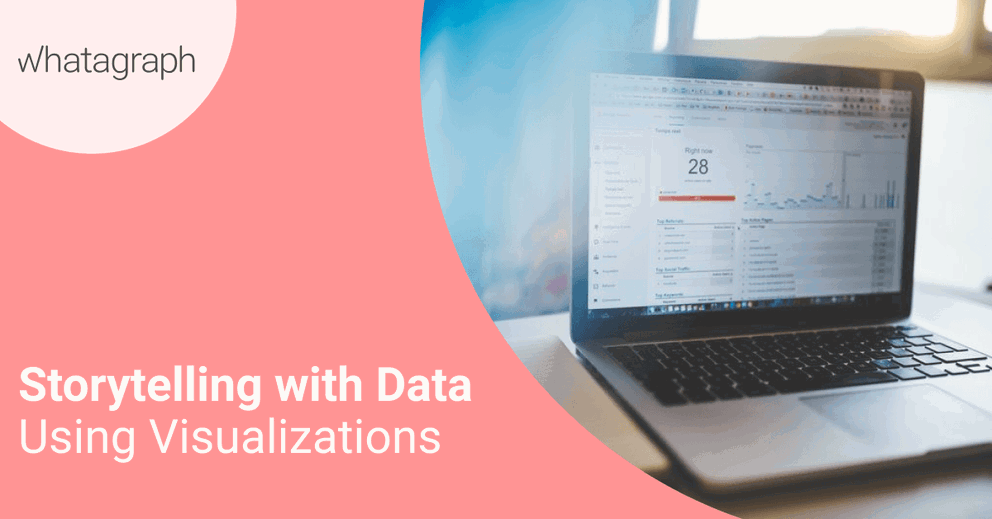
News and stories were written and shared online for the consumption of the public. Blogging came into life and allowed everyone to get a voice and become a writer and a storyteller. The expanding access to the internet in the whole world has eventually turned it into one of the most powerful mediums ever created.
It’s become such a huge source of data that, fast forward a decade, we are drowning in the sea of information overload. This had its consequences, for example, one of them being that we no longer consume the news or marketing messaging the way we used to and attention span has shortened from 12 to 8.25 seconds.
In 2020 it’s clear that consumers’ attention is the resource that companies look to attract the most. Storytelling continues to be one of the most powerful tools to achieve it, but it’s evolving from the text-based form to a more visual or even an interactive one.
In this article, I’ll explore the topic of using data visualizations in storytelling and show you the ways to leverage that to your business’s advantage using data visualization techniques.
Let’s dive in.
Why Storytelling Works Well
Telling stories has been a way to transmit important information virtually from the moment humankind could speak. It’s no wonder that it still functions as a means to inform and often also encourage people to take a desired action.
Facts and data are more memorable when presented in the form of a story. Studies show that stories are more effective than statistics in the following ways:
- Only 5% of people remember the numbers/statistics, while 63% remember the story;
- Stories persuade twice as much compared to hard data.
It makes sense, as presenting solely numbers and statistics is engaging our left, analytical part of the brain, while stories engage both - left and right brain.
Moreover, storytelling is great for building a stronger relationship with your audience. It helps to foster empathy and evoke emotions, which is very important according to GetVoIP that helps you gain trust and connect on a deeper level. Stories are also what attracts and maintains the attention, which makes it way easier to get your message across.
In the era of rapidly developing social media platforms, it’s the visual content that starts to play a leading role in raising brand awareness and conveying messages to the target audience. With more companies marketing their products or services using Instagram, Pinterest or Youtube and leveraging the power of visual content, skillful use of storytelling becomes a competitive edge.
Now, let’s take a look at what the storytelling process consists of and how you can start building your own data-based visual stories.
Key Elements of Storytelling Using Data Visualization
Telling great stories might seem like a creative process that is reserved for a brilliant few.
But that couldn’t be further from the truth.
Each creative process, including storytelling, can be quite easily deconstructed to a few, simple steps that anyone can follow. Of course, this is also true for storytelling using data visualization, and here are its key elements.
- Relevant data
- Appealing visuals
- Engaging narrative
Building a story is about skillfully connecting them to convey a message that you want to share with your audience. It could be a single story, or a whole, never-ending narrative. There are plenty of companies using storytelling with visuals to create their branding.
Great news is that with tools such as Whatagraph you can create such visual identity for your own business or impress your clients with beautiful reports. The software allows you to present data in an aesthetically pleasing and comprehensive manner.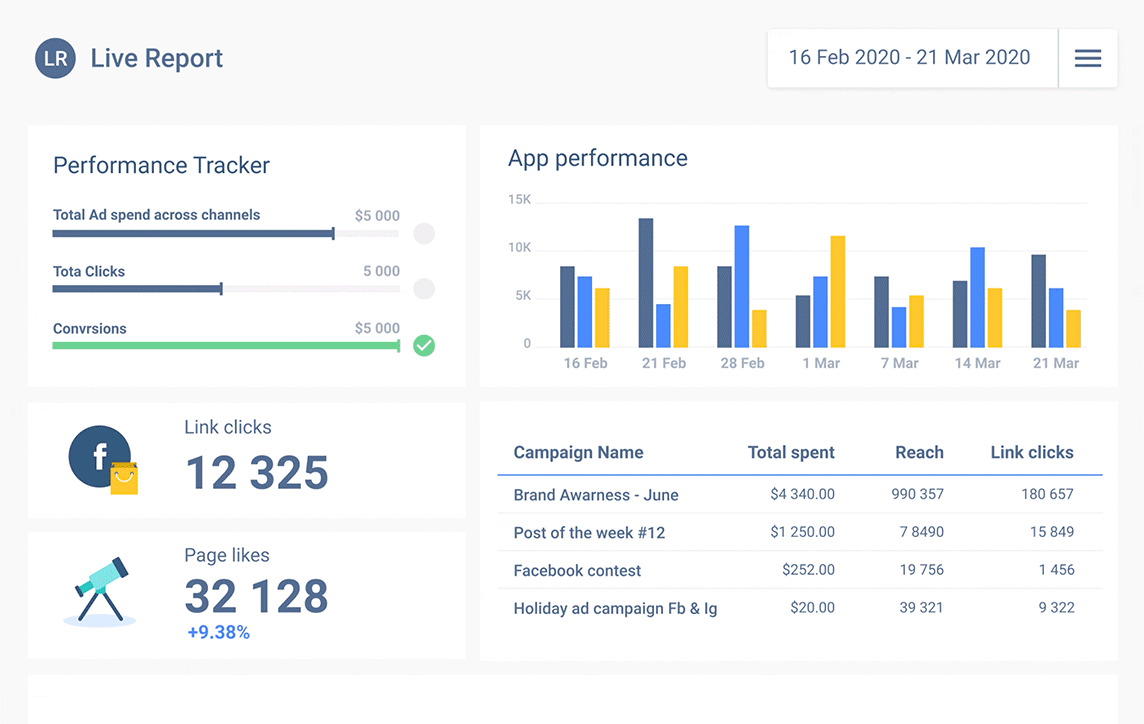
Even the most complicated data can be visually represented and therefore easily understood by your target audience. Using such tools speeds up the process, as you can right away combine your data, narrative, and your visuals into one.
Now let’s break it down.
How to Tell an Engaging Story with Data Visualization
As mentioned above, the process of creating a story is simply following a logical sequence that, luckily for you, some smart person has already built.
Take a look at this basic, visual representation of the story’s lifecycle.

In short, this process can be divided into four main stages that I’m going to describe below.
Introduction
For the story to come into life, you need to take care of the right set up. What I mean here is giving the right context as well as a hook that will attract attention and keep the audience interested in what’s coming next.
The beginning is meant to present some sort of “issue” that needs to be addressed and show benefits of resolving it (so that they feel that the story is worth knowing). In terms of data, it usually shows a kind of deviation or anomaly.
Example: Since June 2018, our organic traffic was steadily growing by about 10-20% each quarter. However, in the first quarter of 2020, we’ve observed a staggering 35% decrease in organic traffic and it got us wondering why...

Rising action
This stage is all about explaining the facts further and the analysis of data. Here, you can present your supporting evidence, findings, and your suggestions as to why things might be the way they are.
A word of caution here: You mustn’t overwhelm your audience with numbers here. Giving the right context and choosing only the most relevant pieces of the puzzle is crucial, as you are moving towards the climax stage. Don’t reveal too much in the rising action phase as the “aha moment” on the side of your audience should still come out strongly and somewhat unexpectedly.
Example continued: We’ve analyzed our SEO strategy, compared data to our competitors, and reviewed our content. While doing that, we noticed that the blog article that was bringing us the most traffic suddenly dropped in ranking and stopped attracting new website visitors. Other articles were performing as usual.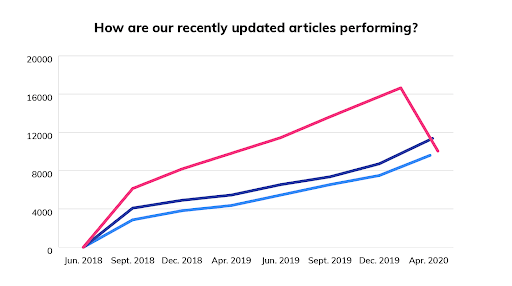
Climax
In this phase, the “aha moment’ comes into play. It’s where you reveal the main reason why things turned out the way they did. At this stage, everything becomes crystal clear and your audience gets a pretty good idea of how the whole process led you up to this point.
The pieces of the puzzle are connected and the data presented starts making perfect sense.
Example continued: Digging deeper we’ve found the problem. It turned out that at the time, we’ve updated this post and it stopped ranking for some of the keywords. Additionally, we’ve found that due to keyword cannibalization, it started competing in SERPh with another one of our articles which dragged the ranking down.
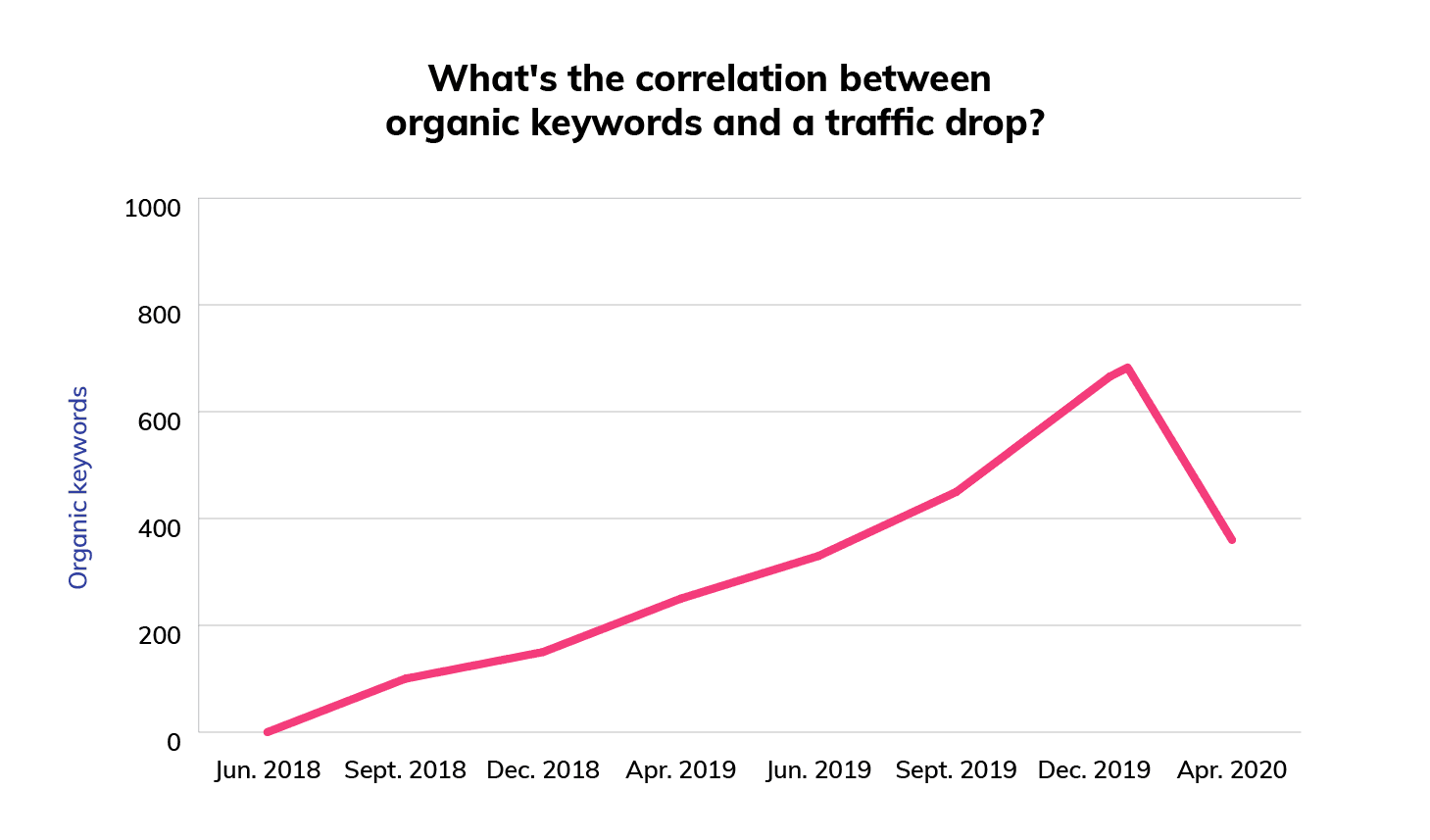
Solution/Conclusion
Finally, we arrive at the solution. It’s the concluding stage of your story where you sum up your thoughts and define the next steps. You can either give a hypothetical, alternative ending to how the situation would turn out if some action were taken or avoided, or give recommendations for the future.
Example: We’ve realized that our update did not go as planned. If our keyword research and content were planned a bit better, the article would be now bringing that much traffic.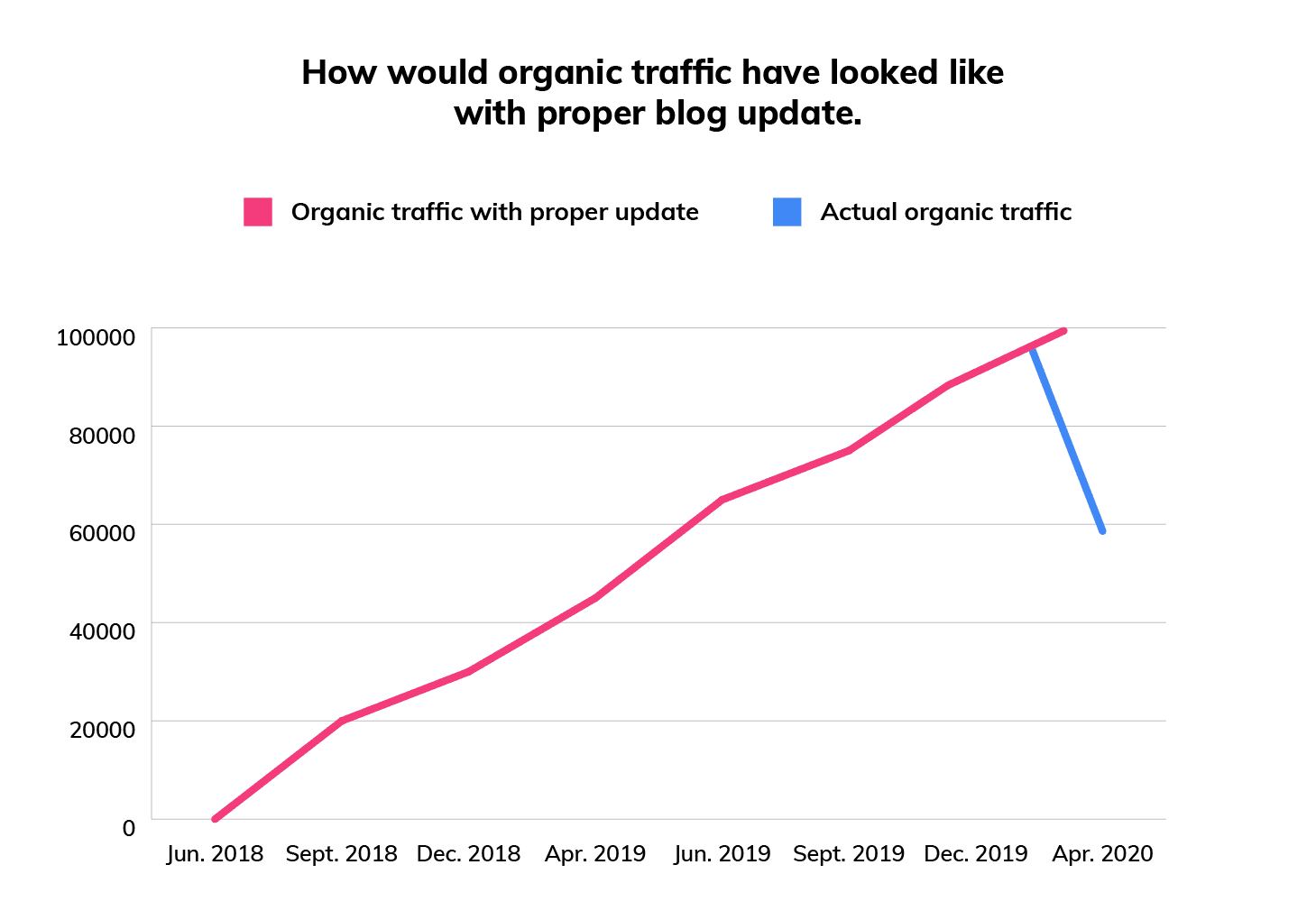
That’s also a good lesson for us for the future and we plan to update the article once again to fix that issue.
Best Practices for Storytelling with Data Visualization
Of course, I couldn’t just leave you with dry instructions on how to design a good story. That’s why I’ve prepared a short set of best practices to follow when implementing storytelling with data visualization.
Here are my tips:
Understand your audience
You can build the best, most engaging story ever but if you are going to tell it to the wrong crowd, your efforts will be in vain.
You must have a good understanding of your target audience, their goals, and how they align with your business objectives. This is how you make money from content marketing. Especially so, if your story will be based on a lot of data. Some people are quick at adapting new information quite easily, but others might struggle to understand the context.
That’s why make sure that you know your audience and their capabilities. This will allow you to decide on the best way to present your data, as well as how much context is needed for the story to work well.
Align data with your message
Another important aspect of storytelling using visualization is to always double-check whether what you are showing and sharing makes sense.
It’s not uncommon to see presentations with contradicting or misleading information. And it’s even more likely to see important data presented in a way that’s not comprehensible for the audience.
This happens on two levels: the design and data relevancy.
You must have a clear idea of what message you are trying to convey and what kind of data can support it in the best way. From there you are just a step away from putting it all together in a compelling and memorable story that illustrates the point.
Use the right visuals
This shouldn’t come as a surprise and yet it’s crucial to mention that the visuals you choose to represent your story need to be well thought-through. They should be understandable and match the context and the data.
For example, when presenting numbers, show separate graphs and the connection between them. At the same time, talking about processes or explaining some concepts might be more comprehensible when using a visually appealing infographic outlining the steps. Finally, tables are awesome for showing comparisons.
Using the right visuals also means the variety. Depending on how short or long is your story, you might want to juggle a few different types of visual content to illustrate your points. There are plenty of tools that can help you get the results you want.
Here are some of them:
- Whatagraph - best used for campaign reporting and typical numbers data and interactive visualization;
- BreadnBeyond - a tool used for creating explainer videos;
- Visme - can help you design beautiful presentations and infographics.
- ChartExpo - ChartExpo is an easy to use advanced data visualizations plug-in for Microsoft Excel, Google Sheets and Power BI. No coding. No scripting. No technical skills required. You can create custom charts in a few clicks
Choose the most suitable one and start creating your own visual story.
Eliminate the clutter
Converting written text and large sets of data into visual content is not an easy task. Numbers and facts can be overwhelming and quite difficult to present in a visual form.
However, it’s also a great exercise in separating the clutter from the important points. It’s tempting to try to communicate all the information that you have the access to, but don’t forget that the point is to convey the most important message that your audience will understand and remember.
Eliminating the clutter should already be done at the stage of creating the story’s outline. Focus on the cause and effect, rather than the context and background explanations.
Make sure to dose your information, too. The rule saying; The less the better works perfectly well here.
3 Visual Storytelling Examples
Nowadays, many companies decide to invest their time and effort into creating infographics. Infographics are used to visually represent data or show processes which are daunting to explain in writing. You can use them on your blog or your social media.
I’ve prepared a few of my favorite data visualization examples from real-life companies to give you a better idea of how that looks in practice.
Tidio
For example, Tidio has used data visualization to build a story in their article on how to make a chatbot. To show the audience why people are deciding to build chatbots for the websites, they’ve made a survey and displayed the results in the form of a graphic. This made it easier for the reader to understand the context.
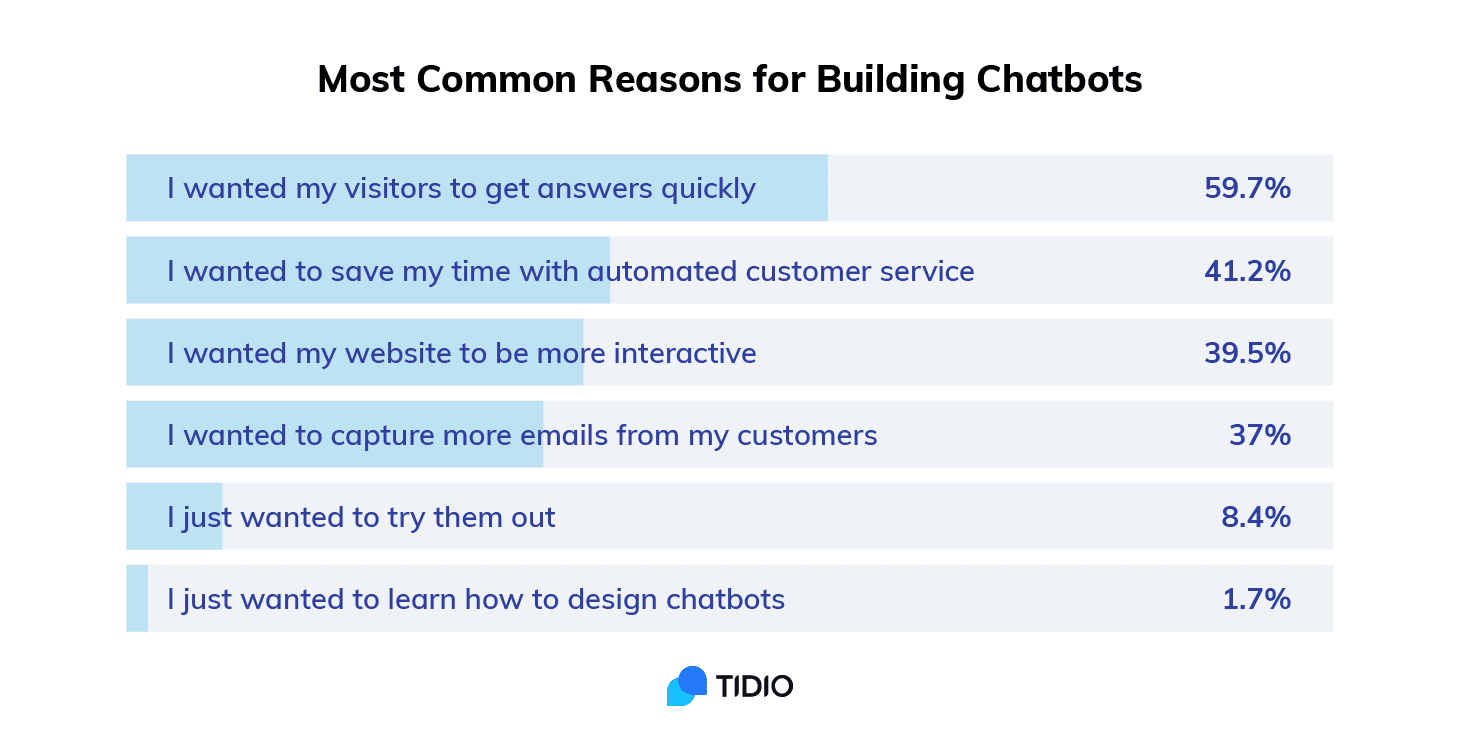
This data was presented as background information supporting the article’s main theme (story) related to chatbots being a great addition to eCommerce stores.
AppJobs
Another example is Appjobs that have used a visually appealing graphic to show data related to coronavirus effects on gig economy. It’s very comprehensible and allows the reader to quickly learn the most important information.
 |
BigCommerce
Lastly, you can take a look at how BigCommerce is using infographics to present their data gathered from research. The design is simple and it’s fitting their style. At the same time, all information presented here makes an intro for the rest of the article (story).
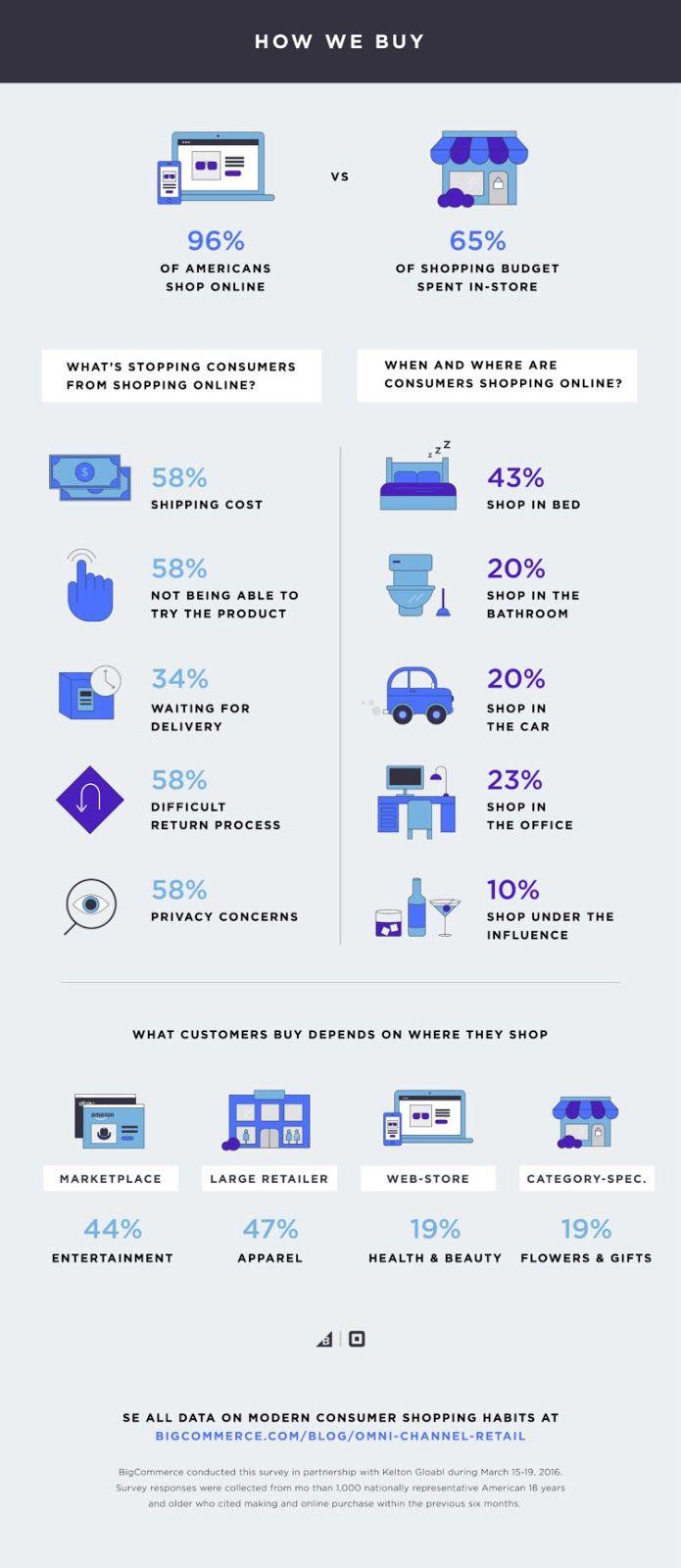
This kind of data visualization is great for setting the tone for the message you want to convey.
Bonus tip: You can also use visual storytelling for other types of information, not just number-rich data. For example, you can design infographics for showing steps or processes. Moosend has done it with their visual tutorial on newsletter design and ReferralCandy did that for explaining the idea of referral marketing.
Wrapping up
All in all, the art of storytelling has preserved and has taken many forms. Using a data visualization dashboard for telling a compelling story about your brand or your product is one of the most powerful marketing data visualization techniques you can use.
Don’t shy away from the technology and use its power to your advantage. Whether you want to share educational content or convince your audience to take action, visual storytelling should become a part of your strategy.
Learn to leverage it for your marketing success and surprise your audience with beautifully designed reports, infographics, and presentations.
Published on Apr 24 2020

WRITTEN BY
Gintaras BaltusevičiusGintaras is an experienced marketing professional who is always eager to explore the most up-to-date issues in data marketing. Having worked as an SEO manager at several companies, he's a valuable addition to the Whatagraph writers' pool.